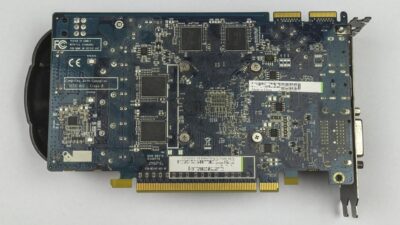GeForce Innovations: The Latest Technologies Shaping the Future of Graphics
In the ever-evolving realm of computer graphics, NVIDIA’s GeForce series stands as a beacon of innovation, continuously pushing the boundaries of what is possible in gaming, content creation, and artificial intelligence (AI). As we delve into the latest technologies surrounding GeForce GPUs, it becomes evident that the future of graphics is not merely about improved frame rates and resolutions; it’s about a holistic enhancement of the visual experience.
1. Ray Tracing: The New Standard in Realism
Ray tracing has emerged as one of the most transformative technologies in graphics rendering. By simulating the way light interacts with objects, ray tracing produces stunningly realistic visuals, including reflections, shadows, and ambient occlusion. NVIDIA’s RT Cores, which are specifically designed for real-time ray tracing, are a game changer, enabling developers to incorporate this technology into games without compromising performance. As more titles adopt ray tracing, players are treated to immersive environments that bridge the gap between reality and the digital world.
2. DLSS: Revolutionizing Performance with AI
Deep Learning Super Sampling (DLSS) stands out as a significant leap forward in graphics performance. Utilizing AI algorithms, DLSS renders images at a lower resolution and then upscales them to higher resolutions, allowing for dramatic improvements in frame rates without sacrificing visual fidelity. With each successive version—most recently DLSS 3—this technology has become integral for gamers who want to experience high-end graphics without the hardware burden. As a result, even mid-range GPUs can deliver impressive performance, extending the lifespan of older hardware.
3. NVIDIA Reflex: Reducing Input Lag for Competitive Edge
In competitive gaming, milliseconds can be the difference between victory and defeat. NVIDIA Reflex addresses this issue by reducing input lag, allowing gamers to respond more quickly to in-game events. By optimizing the entire rendering pipeline, Reflex enhances the overall responsiveness of gameplay, making it an essential feature for eSports and fast-paced titles. This technology underpins NVIDIA’s commitment to not just graphical fidelity, but also to gameplay performance.
4. Omniverse: The Future of 3D Collaboration
NVIDIA’s Omniverse has redefined the landscape of virtual collaboration and 3D content creation. This platform allows creators, designers, and engineers to work together in real-time within a shared virtual space, fostering unprecedented collaboration. With built-in support for ray tracing and AI-driven features, Omniverse serves as a powerful tool for industries like gaming, simulation, and architectural visualization. This innovation underscores NVIDIA’s foresight in enabling creators to build and share sophisticated graphics in a versatile environment.
5. Advanced AI Features: Enhancing Visuals Beyond Gaming
NVIDIA is not just a graphics company; it is also at the forefront of AI innovations that extend beyond gaming graphics. Technologies such as Maxine leverage AI for video conferencing, providing features like background removal and noise reduction in real-time. Moreover, AI is being harnessed in other creative applications as well, with tools that automate complex tasks in video editing and animation, helping to streamline workflows for artists and content creators.
6. The Future of Graphics: Beyond Traditional Boundaries
As we look to the future, it’s clear that graphics technology will permeate various aspects of everyday life. From virtual reality (VR) to augmented reality (AR), and even the burgeoning metaverse, NVIDIA’s cutting-edge graphics technology is uniquely positioned to lead the charge. Innovations like NVIDIA Broadcast enhance experiences across platforms, making AI-enhanced audiovisual capabilities accessible to everyone, whether they’re gamers, streamers, or remote workers.
Conclusion
The trajectory of GeForce innovations is nothing short of exhilarating. As NVIDIA continues to refine and expand its portfolio of technologies, it elevates not just the gaming experience but also the broader landscape of digital creation and interaction. By embracing developments like ray tracing, DLSS, and AI-powered solutions, NVIDIA is shaping a future where breathtaking visuals and seamless performance are the norm. As gamers, creators, and consumers, we stand on the cusp of a graphics revolution that promises to enhance our experiences in ways we can only begin to imagine.
